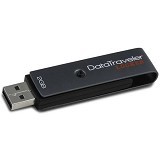Data Encryption for Storage Devices
From Computing and Software Wiki
Data Encryption for Storage Devices is a special case of data at rest[1] protection. Data can be encrypted through the use of software, or hardware itself can encrypt data as it is saved to the device.
Contents |
Data Encryption
Encryption is used in cryptography to transform plaintext to ciphertext[2]. In the case of storage devices, encrypted data that is stored can only be accessed with the proper authentication. Physical theft of the medium negates password protection since the data can simply be read from it. On the other hand, if the data was encrypted before being written, the data is still protected unless the key is known. With the theft/loss of hard drive with personal data becoming an issue[3], the encryption of storage devices becomes an attractive way to avoid such issues.
Implementations
Data can be encrypted through encryption technology built into the storage medium, or different software that encrypts data before writing it.
Hardware Implementation
Hardware implementations include hard disk drives, portable storage drives, and USB flash drives. Encrypted hard disks have been available since April 2008[4] but an actual standard was agreed upon and established in January 2009[5].
Advantages
Obviously.
Disadvantages
Obviously.
Software Implementation
Software encryption is offered natively in MAC OSX and Windows Vista[6] as well as commercial or free applications.
Advantages
Obviously.
Disadvantages
Obviously.
See Also
- Conventional Encryption Algorithms
- Security and Storage Mediums
- Cryptography in Information Security
References
[4] Fujitsu Ups Ante on Integral Hard Disk Encryption
[5] Coming soon: Full-disk encryption for all computer drives
[6] Protect Your Data With Whole-Disk Encryption
External Links
- IEEE Security in Storage Working Group
- Disk Encryption HowTo (Linux)
- Official FreeOTFE Website
- Official TrueCrypt Website
- Wikipedia:Encryption
Shellya 18:16, 10 April 2009 (EDT)

